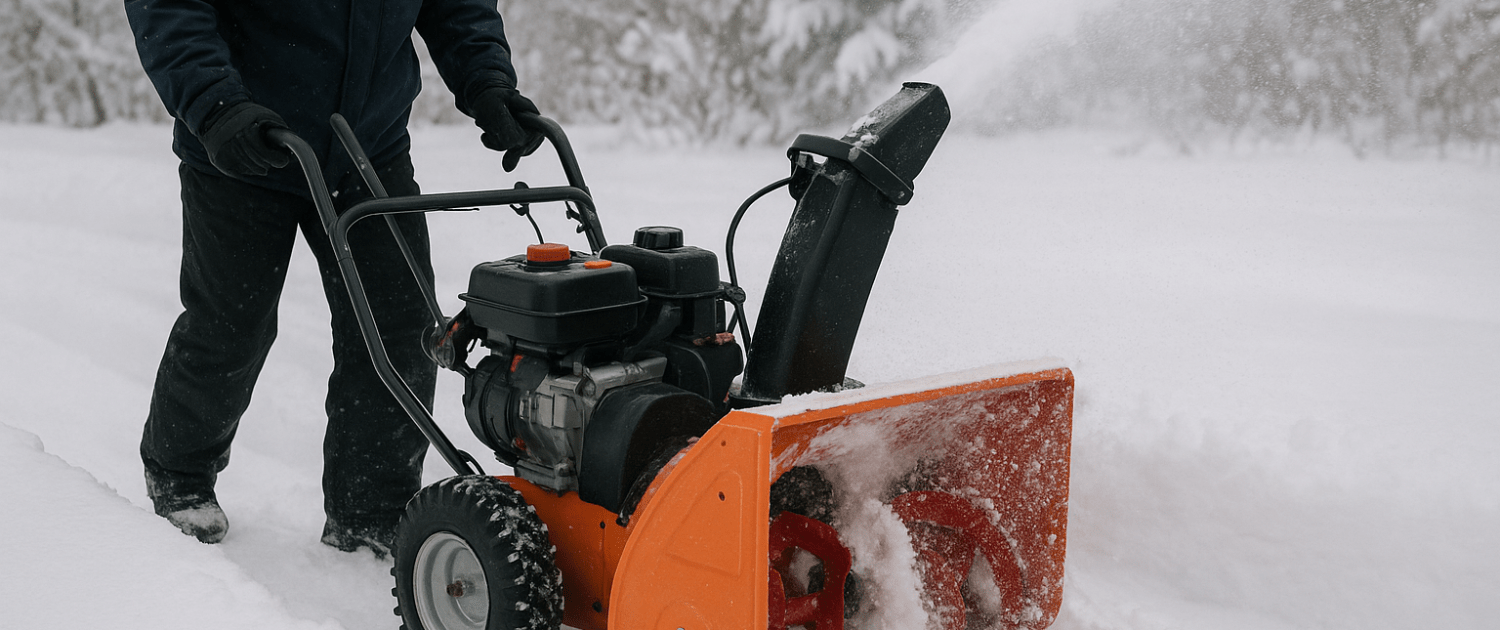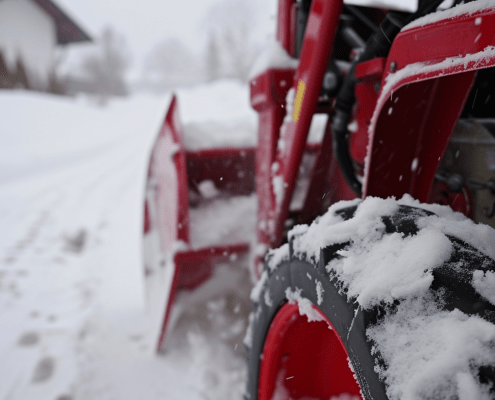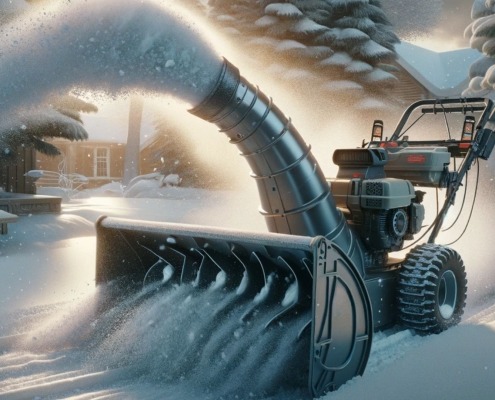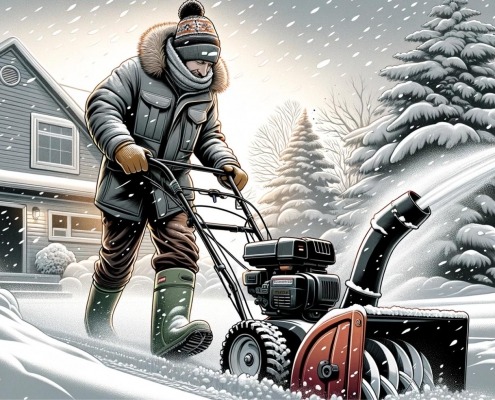Fix Your Snowblower’s Gas Leak with These Simple Steps
Steven E / Monday May 19, 2025
Snowblowers, like any machine, can experience issues over time. One common and worrisome problem is gas leaks. These leaks not only impede snow-clearing efforts but also present significant safety hazards..We will explore the main causes of gas leaks in snowblowers and provide step-by-step solutions to help you troubleshoot and fix them. Whether you’re a seasoned snowblower user or a newcomer to the world of snow removal, this article will equip you with the knowledge to keep your snowblower running smoothly all winter long.
The information in this article may not apply to your specific appliance model. We recommend consulting your manufacturer’s documentation or contact us with any questions.
Why snowblower gas leaks matter
Let’s look at why fuel leaks aren’t something to brush off. Gas leaks can lead to some serious repercussions if left unchecked:
- Fire hazard: The biggest risk is an engine fire if gas comes into contact with hot engine parts or sparks. Fuel leaks can turn your snowblower into a fireball that can quickly ignite nearby objects, buildings, or even people.
- Injuries: Gasoline is toxic. Leaking vapors can cause eye and skin irritation or inhalation issues if you are exposed over time without adequate ventilation.
- Engine damage: Gas leaks cause improper fuel-air ratios in the combustion chamber, leading to fouled spark plugs, carbon build-up, and eventually expensive repairs.
The bottom line is you should never ignore any amount of leaking gas. Small leaks tend to rapidly get worse anyway. So let’s look at how to diagnose and fix the problem.
Finding the source of the leak
Snowblower fuel systems can vary a bit based on the model and manufacturer. But don’t worry! The basic components and troubleshooting steps generally follow a similar pattern. So, when you catch a whiff of gas, just follow this systematic approach to track down the leak:
Start at the fuel tank
The most obvious place for leaks to spring is where the gas first enters and exits the fuel tank. Check these key areas on the tank:
- Fuel tank cap – Make sure the cap seals tightly. If not, clean the threads or replace the cap.
- Fuel shut-off valve – Tighten the fuel line connection. Inspect for cracks in the valve housing.
- Fuel filter housing – Check for cracks and replace the filter. Use outdoor-rated fuel lines for any replaced connections.
Inspect the fuel lines
The lines that convey gas from the tank to the carburetor are prone to age-related cracks and brittleness. Check the entire fuel line route for:
- Cracks/splits – Any cracked sections warrant full fuel line replacement, not just patched repairs.
- Line connections – Tighten any loose fittings. Make sure the clamps are tight.
- Primer bulb – Replace any cracked primer bulbs. Don’t attempt to glue or repair them.
Evaluate the carburetor
The carburetor converts liquid gasoline into a combustible air-fuel mixture. Issues here are a major contributor to snowblower gas leaks:
- Body cracks – Vibration can crack the carburetor’s body, causing leaks. Replace a cracked carburetor.
- Sticking float – A float stuck open pours out excess fuel. Careful cleaning may help, but rebuild or replace a faulty carb.
- Gaskets – Make sure all gaskets/seals between the carb and adjacent equipment are in good shape.
Examine engine components
If you come across any leaks that you just can’t figure out, go ahead and take off those belt covers and give the engine parts a good check.
- Fuel pump – Make sure lines are tight. Replace any cracked or damaged pumps.
- Fuel filter – Check condition and for any leaks at connections.
- Spark plugs – Remove and inspect for fouling from fuel. Replace if needed.
Thoroughly looking over each component will lead you to the leak source. Next, let’s get into the fixes.
Making fuel system repairs
Once you’ve identified the component behind the leak, here are some tips on completing the necessary repairs:
Replace fuel system parts
As a rule of thumb, always replace a leaking fuel component rather than trying to patch or repair it. Devices like fuel shut-off valves, primer bulbs, fuel pumps, and cracked carburetor bodies cannot be reliably patched up. Install new replacements to solve leaks.
Use proper fuel lines
Check that any replacement fuel lines are designed for outdoor use, such as neoprene or other weather-resistant materials. Carefully measure and cut new sections to the needed size using a sharp utility knife. Don’t try splicing damaged sections – always replace the full line for reliability.
Clean or rebuild carburetors
If the leak stems from a sticking carburetor float, try cleaning the carb thoroughly with compressed air and carburetor cleaner spray. Use a repair kit to replace any worn parts. If cleaning doesn’t remedy issues, a full carburetor rebuild or replacement may be necessary.
Adjust float settings
Sometimes a fuel leak results from an improperly adjusted carburetor float. Consult your snowblower manual to check and tweak the float settings as needed to stop overflow issues. This fine-tuning can eliminate leaks without major disassembly.
Secure fuel filter housing
When swapping out external fuel filters, examine the plastic housing for any cracks or damage. Replace the entire filter assembly if the housing is compromised. Use fuel line rated for outdoor use on any replaced filter connections.
Tighten fuel line fittings
Cracks aren’t always the issue with fuel lines. Simply loose fittings can also cause drips and leaks. When replacing any fuel lines, securely tighten all connections with hose clamps or specialty fasteners made to seal fuel components.
By addressing leaks at their source through proper replacement and repairs, you can keep your snow-clearing machine running smoothly all season long.
Where To Find Us
If you need any replacement parts for your appliances, you can enter your model number at AppliancePartsPros.com to locate and order them quickly. Most orders arrive in just two business days, and we have tons of great information in our repair help section and YouTube videos to help you troubleshoot.
Stay connected with the latest DIY tips, tutorial videos, and repair guides by following us on Facebook, Instagram, and Twitter. We love hearing about your repair stories and successes. If you need more help or want personalized guidance, feel free to reach out. We’re ready to help you take on your next project with confidence!
With nearly a decade of experience in providing top-notch customer service regarding appliance parts and repair, Steven enjoys sharing practical advice, troubleshooting tips, and interesting information to help readers stay informed.





